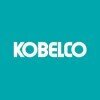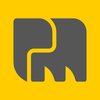Filter interviews by
HYT Engineering Applications Engineer Interview Questions and Answers
HYT Engineering Applications Engineer Interview Experiences
1 interview found
(2 Questions)
- Q1. Ask about previous company work
- Q2. Ask about autocad
Top trending discussions






Interview questions from similar companies

I applied via Naukri.com and was interviewed in Jul 2023. There were 5 interview rounds.

(1 Question)
- Q1. Basic question information self
- Ans.
I am a dedicated Sr Engineer with expertise in software development and a passion for innovative solutions.
Over 10 years of experience in software engineering, specializing in full-stack development.
Proficient in languages such as Java, Python, and JavaScript, with a focus on building scalable applications.
Led a team of engineers in developing a cloud-based solution that improved system efficiency by 30%.
Strong backgro...
General aptitude teat and mechanical engineering technical question paper
(1 Question)
- Q1. Previous experience and technical knowledge basic concepts
(1 Question)
- Q1. Current company products and handling qualifications
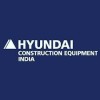
Senior Engineer Interview Questions & Answers
Hyundai Construction Equipmentposted on 9 Sep 2021
I applied via Referral and was interviewed in Mar 2021. There were 3 interview rounds.
Interview Questionnaire
2 Questions
- Q1. About Process related to Assembly line
- Q2. Details of assembly line sequence
- Ans.
The assembly line sequence involves a step-by-step process of assembling parts to create a final product.
The process starts with the arrival of raw materials
Parts are then assembled in a specific order
Quality checks are performed at various stages
The final product is packaged and shipped
Efficiency and safety are key considerations throughout the process
Interview Preparation Tips

I applied via Approached by Company and was interviewed in May 2023. There were 2 interview rounds.

(2 Questions)
- Q1. 1) Hydraulics details
- Q2. GD&T explain, the difference between different GD&T
- Ans.
Geometric Dimensioning and Tolerancing (GD&T) is a system for defining and communicating engineering tolerances.
GD&T is a system used to define and communicate engineering tolerances for manufacturing processes.
Different GD&T symbols include position, concentricity, profile, perpendicularity, and parallelism.
Each GD&T symbol has a specific meaning and is used to control different aspects of a part's geometry.
For exampl...
Interview Preparation Tips
- Hydraulics
- gd&t
Skills evaluated in this interview

Design Engineer Interview Questions & Answers
Tecosim Engineering Servicesposted on 16 Feb 2022
I applied via Indeed and was interviewed in Aug 2021. There were 5 interview rounds.

(6 Questions)
- Q1. What are your salary expectations?
- Q2. What is your family background?
- Ans.
I come from a close-knit family that values education and creativity, fostering my passion for design engineering from a young age.
My parents are both engineers, which inspired my interest in design and problem-solving.
I have a younger sister who is studying architecture, showcasing our family's commitment to creative fields.
Family gatherings often involve discussions about innovative projects and ideas, encouraging a ...
- Q3. Share details of your previous job.
- Ans.
I worked as a Design Engineer at XYZ Corp, focusing on innovative product designs and improving manufacturing processes.
Led a team to design a new ergonomic tool that reduced user strain by 30%.
Collaborated with cross-functional teams to streamline product development timelines.
Utilized CAD software to create detailed 3D models and prototypes for testing.
Conducted regular design reviews to ensure compliance with indust...
- Q4. Why are you looking for a change?
- Q5. What are your strengths and weaknesses?
- Q6. Tell me about yourself.
(1 Question)
- Q1. About previous job work. Biw fixtures design.
(7 Questions)
- Q1. What are your salary expectations?
- Q2. What is your family background?
- Ans.
I come from a supportive family that values education and creativity, which has greatly influenced my career in design engineering.
My parents are both engineers, which inspired my interest in design and technology from a young age.
I have a younger sister who is pursuing a degree in architecture, showcasing our family's commitment to creative fields.
Family gatherings often involve discussions about projects and innovati...
- Q3. Share details of your previous job.
- Q4. Why are you looking for a change?
- Q5. What are your strengths and weaknesses?
- Q6. Tell me about yourself.
- Q7. Tell me about your self your family background reason for job change. Job location preference.
Interview Preparation Tips
- BIW design engineer
Flexible work hours.

Design Engineer Interview Questions & Answers
Tecosim Engineering Servicesposted on 2 Feb 2022
I applied via Company Website and was interviewed in Jan 2022. There were 3 interview rounds.
(1 Question)
- Q1. Tool test of part drawing in software
- Ans.
Tool test of part drawing in software is a process to ensure accuracy and functionality of the software.
Tool test involves checking the software's ability to read and interpret part drawings
It ensures that the software can accurately generate tool paths based on the part drawing
Examples of software used for tool test include SolidWorks, AutoCAD, and CATIA
(1 Question)
- Q1. Technical discussion with the manager Why m joing this firm all
- Ans. The working conditions and better
(6 Questions)
- Q1. What are your salary expectations?
- Q2. Why should we hire you?
- Q3. Share details of your previous job.
- Q4. Why are you looking for a change?
- Q5. What are your strengths and weaknesses?
- Q6. Tell me about yourself.
Interview Preparation Tips
Skills evaluated in this interview

Design Engineer Interview Questions & Answers
Tecosim Engineering Servicesposted on 16 Feb 2022
I applied via Company Website and was interviewed in Jan 2022. There were 3 interview rounds.
(1 Question)
- Q1. Technical tool test on Nx or Catia
(2 Questions)
- Q1. Tell about personal and some design related technical question
- Q2. Type of clamp and locator Type of checking fixture
- Ans.
The type of clamp and locator used in a checking fixture depends on the specific application and requirements.
The clamp and locator should be chosen based on the part being checked and the desired level of accuracy.
Common types of clamps include toggle clamps, pneumatic clamps, and hydraulic clamps.
Locators can be pins, blocks, or other features that ensure proper positioning of the part.
The checking fixture may also i...
(1 Question)
- Q1. Personal interrogation
Interview Preparation Tips

Design Engineer Interview Questions & Answers
Tecosim Engineering Servicesposted on 23 Aug 2022
I applied via Approached by Company and was interviewed in Dec 2021. There were 2 interview rounds.

(2 Questions)
- Q1. GD and T aplication in fixture design
- Ans.
GD&T (Geometric Dimensioning and Tolerancing) is commonly used in fixture design to ensure accurate and precise manufacturing processes.
GD&T helps define the allowable variations in the dimensions and geometric features of a part, which is crucial in fixture design.
Fixtures are designed to hold and position workpieces during manufacturing processes, and GD&T ensures that the fixtures are capable of achieving the requir...
- Q2. 321 principle for fixture design
- Ans.
The 321 principle is a guideline for fixture design that ensures proper alignment and stability.
The 3 points refer to the minimum number of contact points required for stability.
The 2 points refer to the minimum number of planes required for alignment.
The 1 point refers to the minimum number of degrees of freedom allowed for the part being fixed.
For example, a fixture for holding a cylindrical object may have three con...
Interview Preparation Tips
Skills evaluated in this interview
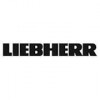
(5 Questions)
- Q1. What means the General tolerances
- Ans.
General tolerances refer to the acceptable range of variation in dimensions or properties of a part or product.
General tolerances are typically specified in engineering drawings to ensure parts fit and function properly.
They are usually expressed as a range of acceptable values, such as +/- 0.1mm.
Tolerances can vary depending on the specific requirements of the part or product.
Examples of general tolerances include dim...
- Q2. What is the material for wheel, Pin
- Ans.
The material for wheel is typically rubber or plastic, while the material for pin is usually metal such as steel or aluminum.
Wheel material is commonly rubber or plastic for flexibility and durability
Pin material is usually metal like steel or aluminum for strength and stability
- Q3. What are the grades of Hardwares like Screw, nut washer
- Ans.
Hardware grades are typically classified based on material composition, strength, and corrosion resistance.
Hardware grades are often denoted by a combination of letters and numbers, such as Grade 8.8 or Grade 316.
Higher grade numbers generally indicate a higher tensile strength or corrosion resistance.
Common grades for screws include Grade 2, Grade 5, and Grade 8, with Grade 8 being the strongest.
For nuts and washers, ...
- Q4. How to calculate motor power
- Ans.
Motor power can be calculated using the formula: Power (W) = Torque (Nm) x Speed (RPM) / 9.548
Calculate the torque required for the application
Determine the speed at which the motor will operate
Use the formula Power (W) = Torque (Nm) x Speed (RPM) / 9.548 to calculate motor power
- Q5. How welds are considered
- Ans.
Welds are critical in design engineering for joining metal components together.
Welds must be strong enough to withstand the intended load and stress.
Proper welding techniques and materials must be used to ensure the integrity of the weld.
Inspections and testing should be conducted to verify the quality of the weld.
Consideration should be given to factors such as joint design, welding process, and material compatibility...
Skills evaluated in this interview


(2 Questions)
- Q1. Experience in software
- Ans.
Extensive experience in various software applications and programming languages.
Proficient in programming languages such as Java, Python, and C++
Experience with software development tools such as Git, JIRA, and Jenkins
Familiarity with database management systems such as MySQL and MongoDB
Experience with web development frameworks such as React and Angular
Ability to learn and adapt to new software quickly
- Q2. Technical knowledge and skills
Interview Preparation Tips
Skills evaluated in this interview
HYT Engineering Interview FAQs
Tell us how to improve this page.
HYT Engineering Interviews By Designations
- HYT Engineering Project Manager Interview Questions
- HYT Engineering Senior Engineer Interview Questions
- HYT Engineering Design Engineer Interview Questions
- HYT Engineering Purchase Executive Interview Questions
- HYT Engineering Marketing Manager Interview Questions
- HYT Engineering Applications Engineer Interview Questions
- HYT Engineering Maintenance Engineer Interview Questions
- HYT Engineering Financial Analyst Interview Questions
- Show more
Overall Interview Experience Rating
based on 1 interview experience
Interview Questions from Similar Companies
|
Purchase Engineer
51
salaries
| ₹2.5 L/yr - ₹6.5 L/yr |
|
Project Manager
45
salaries
| ₹5.5 L/yr - ₹13 L/yr |
|
Quality Engineer
33
salaries
| ₹2 L/yr - ₹5 L/yr |
|
Civil Site Engineer
32
salaries
| ₹2.6 L/yr - ₹5.8 L/yr |
|
Service Engineer
28
salaries
| ₹2 L/yr - ₹5.2 L/yr |

Gilbarco Veeder Root
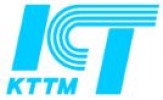
Kirloskar Toyota Textile Machinery

Hyundai Construction Equipment

L&T–MHI Power Boilers
- Home >
- Interviews >
- HYT Engineering Interview Questions





